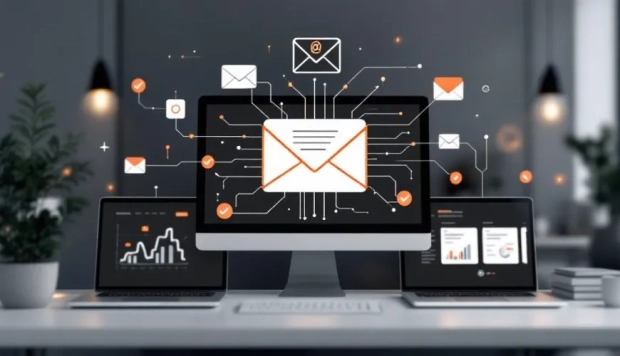Email Marketing Success: Key Factors to Consider

As an email marketer, you must be aware of the struggle to find the right strategies that drive success. Email is undoubtedly one of the most cost-effective ways to promote your products, communicate with your customers, and achieve your business goals.
Therefore, its strategy varies with time. Two years ago, what seemed like an extraordinary strategy is now a daily practice. Thus, you have to stay up-to-date on market trends. So here are five email marketing factors that indeed play their role as "Evergreen Marketing Strategies.”
What is Email Marketing?
You can think of email marketing as a robust digital strategy that connects you with your audience directly. It lets you engage with customers through targeted messages right in their inboxes. But why is it essential, right? Take it as a direct path you take to communicate with customers, build trust, and encourage repeat interactions.
According to the Data and Marketing Association, email marketing can provide a return on investment (ROI) of up to $42 for every $1 spent. This efficiency makes it a must-have in any marketing toolkit.
Have you ever received a personalized email with an exciting offer or helpful information that instantly grabs your attention? Doesn't it intrigue you to open it at least once? This is the magic of email marketing: to influence, inform, and inspire. Email marketing can be tailored to various objectives, from welcoming new subscribers to launching a product.
5 Key Factors to Consider for Email Marketing Success
Are you an email marketer confused about what factors to adapt that can drive your real-time conversion? Don't worry; this article is undoubtedly the best stop for you. Here are five key strategies to learn to make any email a deal maker.
1. Target Audience
To connect powerfully with your audience, you must first know them. This understanding starts with analyzing customer data, behavior, and preferences. But why does it matter? A well-researched audience profile helps you create relevant, resonate-with content.
For instance, if you are a clothing brand and send a promotional email for sweatshirts to a customer who has shown interest in winter clothes, there are comparatively more chances of customer engagement.
Experian Marketing Studies suggests that personalized emails receive 29% higher open rates. Do you research your audience before launching campaigns? If not, then start it right away. You would be surprised to see the results.
2. Content Quality
Your content is the only source of communication between you and your customers. Therefore, it should be comprehensive enough to provide impressive real value. It's important to understand that engaging content goes beyond promotional pitches and offers insights, helpful tips, or exclusive offers. Thus, you should avoid unnecessary fluff and focus on clear, actionable information.
For instance, if you target business professionals, provide them with relevant industry insights. Valuable content keeps readers interested and motivates them to take action.
3. Use of Online Tools
Online tools can simplify your email marketing efforts. Since it's the era of AI, you must leverage tools to automate repetitive tasks and personalize your content. How does it help, right?
AI Tools can segment your audience based on behavior. Thus, you can easily tailor your tone and suggestions to match their preferences. In addition, you can use tools like a free grammar checker to refine your content and make your message error-free. This helps you give your email a well-optimized and professional look. The online tools enable you to send more effective emails in less time. Plus, for a more engaging touch, consider using a profile picture generator to create professional visuals for your emails, making them more personalized and appealing.
4. Scheduling Strategies
Timing is crucial in email marketing. Sending emails at the right time boosts visibility and open rates. Omnisend's research suggests that emails sent on Tuesday and Thursday mornings tend to perform best.
Therefore, you should consider your audience's time zone, habits, and preferences to get ideal responses and results. For instance, targeting a global audience requires scheduling emails at a time that maximizes engagement for all time zones. Have you ever tested different sending times for your emails?
5. A/B Testing
A/B testing involves comparing email variations to determine which works best for your audience. Thus, it is undoubtedly an essential strategy for refining your emails.
The best way to practice this is to start with small changes, such as subject lines, images, or call-to-action buttons, and analyze which version performs better. For instance, testing a subject line that asks a question versus one with a bold statement helps you see what draws more attention. Each successful test brings you closer to understanding your audience's preferences.
Bottomline
Success in email marketing depends on a thoughtful approach. You should continuously refine strategies to meet changing audience needs. You build stronger connections with readers using A/B testing, AI tools, and timely content. Try using tools like Grammar Checker to polish your content further. Remember, effective email marketing is not just about sending messages. It is about creating connections and delivering value.



